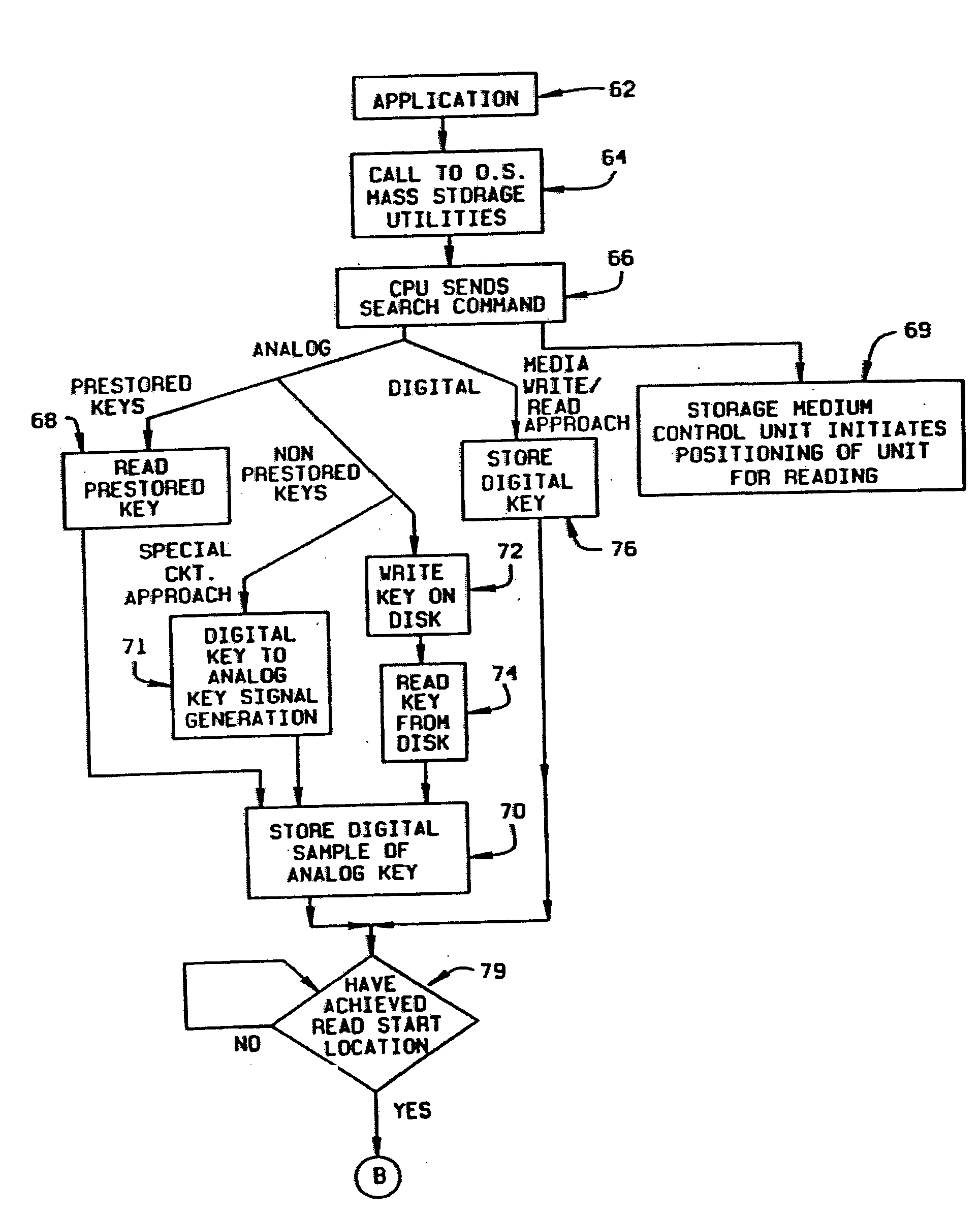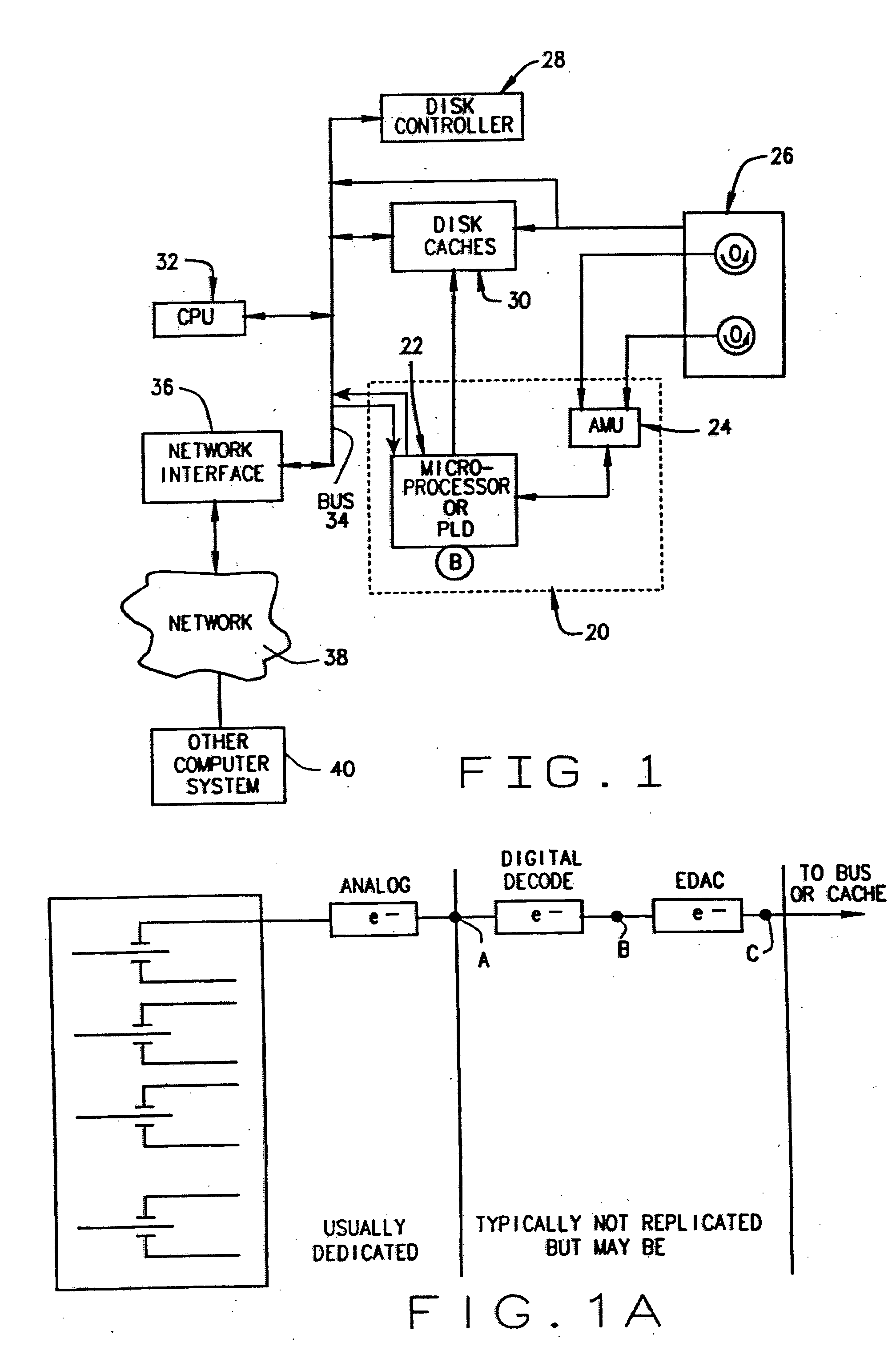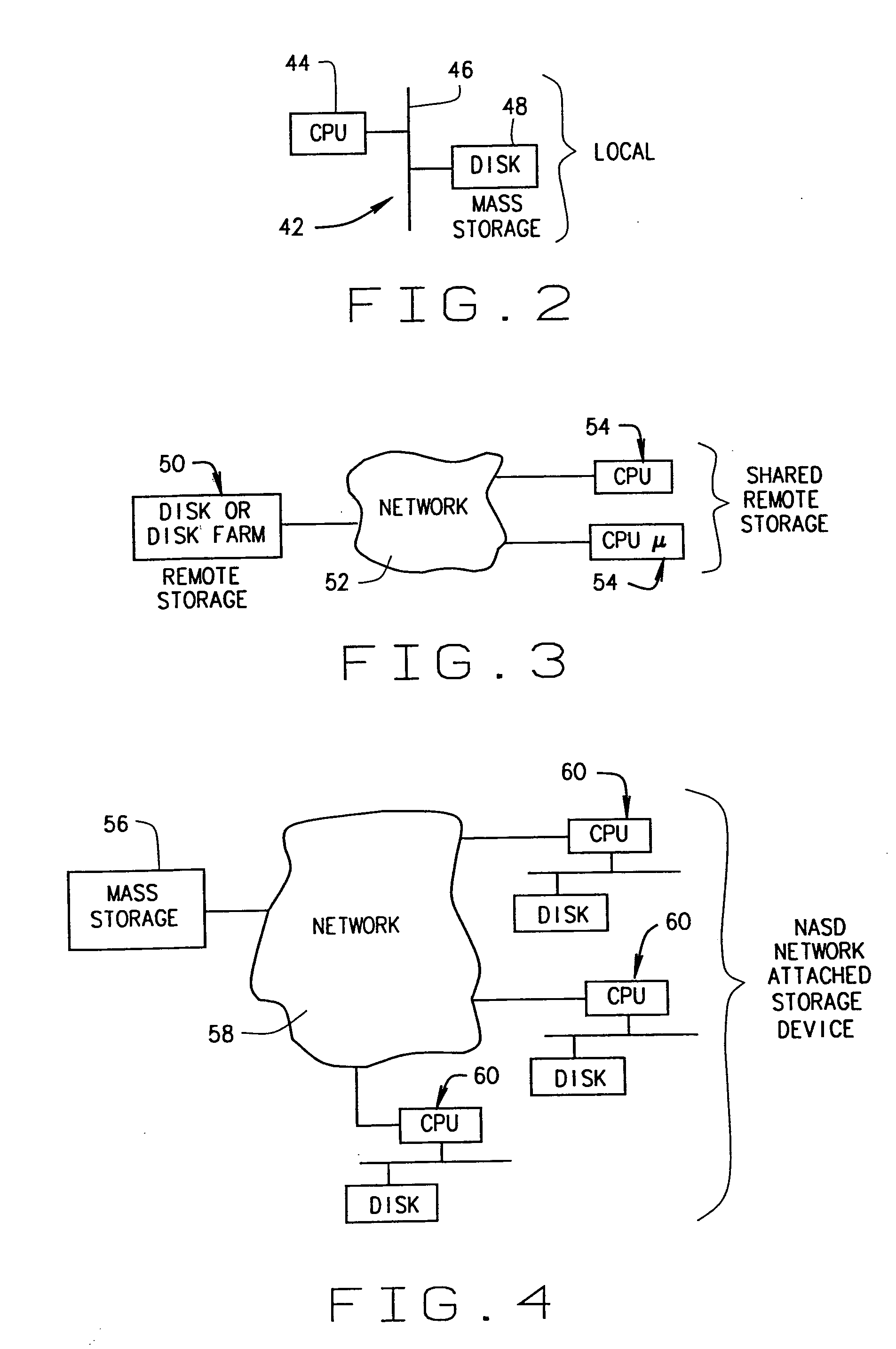Associative Database Scanning and Information Retrieval
a database and database technology, applied in the field of associative database scanning and information retrieval, can solve the problems of not being able to scan and correlate, not being able to support approximate or fuzzy matching, and being taught that the device is not suitable for use with linear or serial memory
- Summary
- Abstract
- Description
- Claims
- Application Information
AI Technical Summary
Benefits of technology
Problems solved by technology
Method used
Image
Examples
Embodiment Construction
[0023] As shown in FIG. 1, the present invention is readily implemented in a stand-alone computer or computer system. In broad terms, the present invention is comprised of an approximate matching and pre-fetch processor 20 which itself comprises a programmable digital logic device or microprocessor 22 coupled to an approximate matching unit 24. A mass storage medium 26 is connected to the approximate matching unit 24 and provides the medium for storing large amounts of data. The term “mass storage medium” should be understood as meaning any device used to store large amounts of data, and which is typically designated for use in a computer or computer network. Examples include optical systems such as CD ROMS, magnetic systems such as hard disk drives or sub-units such as a single disk surface, and these systems may be rotating, linear, serial, parallel, or various combinations of each. For example, a rack of hard disk drive units could be connected in parallel and their parallel outp...
PUM
 Login to View More
Login to View More Abstract
Description
Claims
Application Information
 Login to View More
Login to View More - R&D
- Intellectual Property
- Life Sciences
- Materials
- Tech Scout
- Unparalleled Data Quality
- Higher Quality Content
- 60% Fewer Hallucinations
Browse by: Latest US Patents, China's latest patents, Technical Efficacy Thesaurus, Application Domain, Technology Topic, Popular Technical Reports.
© 2025 PatSnap. All rights reserved.Legal|Privacy policy|Modern Slavery Act Transparency Statement|Sitemap|About US| Contact US: help@patsnap.com



